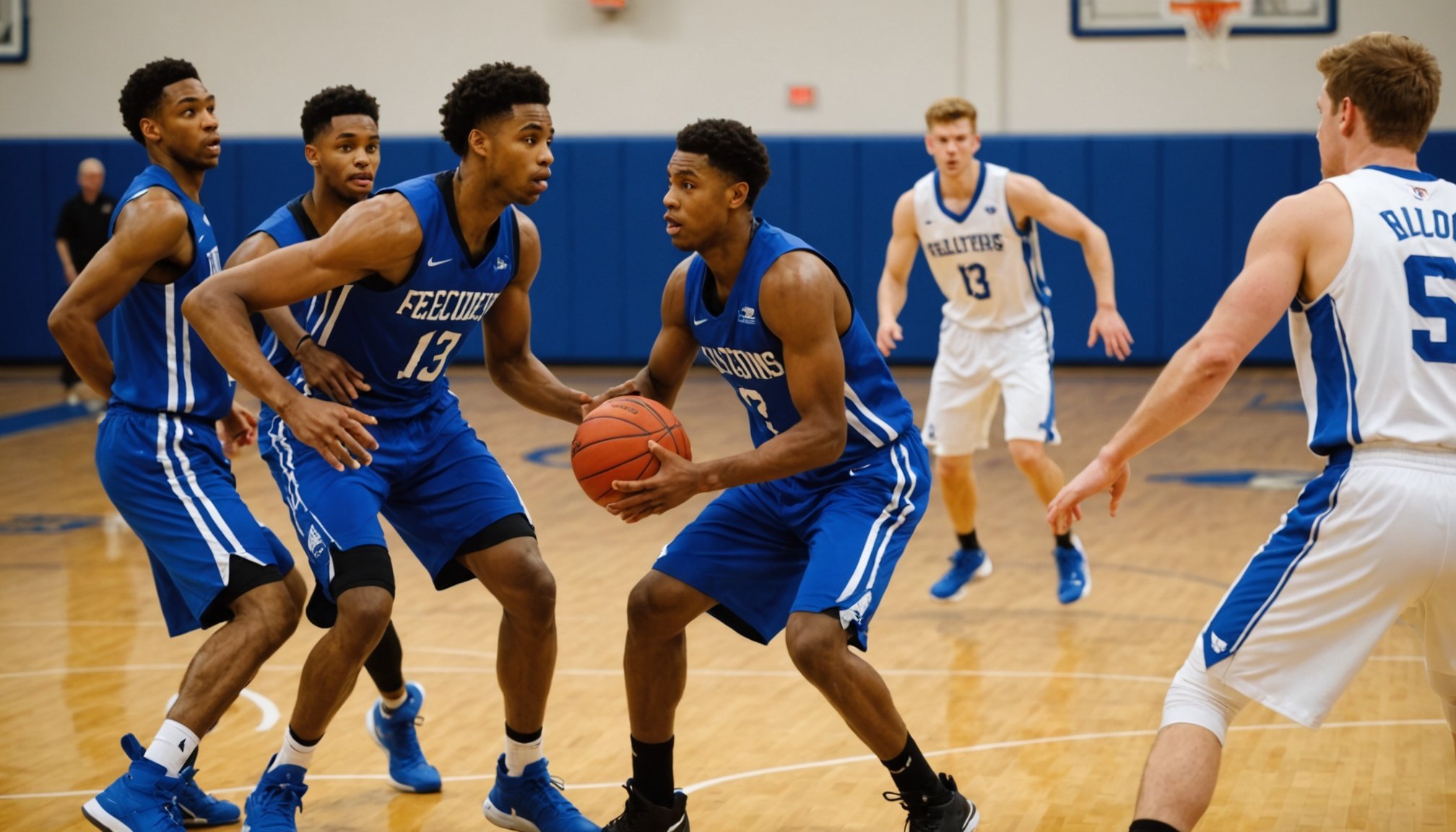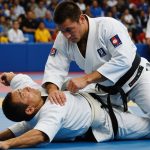Importance of Defensive Reaction Times
In basketball, defensive reaction times are crucial to maintaining an edge over opponents. Swift reaction times enable athletes to quickly respond to opponents’ movements, ultimately improving their overall athletic performance. The importance in basketball of having keen defensive reactions cannot be overstated, as it often determines the outcome of crucial plays.
NBA players often showcase their defensive prowess through quick reaction times. Studies reveal that top defenders have faster average defensive reaction times than their peers, often clocking in at just fractions of a second. This rapid response capability can make a significant difference, allowing defenders to block shots, make steals, or effectively guard against fast breaks.
This might interest you : Elevate your game: key hydration tips for uk basketball athletes”
Sports scientists highlight that the physiological aspects of reaction time are influenced by several factors, including neural pathways, muscle fibre composition, and cognitive processing speeds. Training specifically focused on enhancing these components can lead to substantial improvements in athletic performance. Techniques such as agility drills, reflexive exercises, and mental conditioning are commonly used by athletes to boost their reaction times on the court.
Overall, defensive reaction times play an indispensable role in basketball by influencing a player’s ability to perform effectively under high-pressure situations.
In the same genre : Enhancing court awareness: top strategies for uk basketball players to elevate spatial vision
Proven Techniques to Enhance Reaction Times
Improving your reaction times can give you a competitive edge in sports and other activities. Proven techniques include agility drills, plyometric exercises, and reaction time training tools, each serving different purposes in enhancing performance.
Agility Drills
Agility drills such as ladder drills are highly effective in boosting foot speed. By rapidly stepping through the rungs, athletes can develop quicker reflexes and better coordination. Cone drills are another staple, helping improve lateral movement and quickness. These drills challenge your ability to change directions swiftly, which is crucial for game scenarios. Additionally, incorporating multi-directional sprints simulates real-life sports patterns, preparing athletes for the unpredictability of actual play.
Plyometric Exercises
Plyometric exercises are designed to enhance explosive movement. They focus on jump height and speed, offering benefits like increased power and agility. Sample workouts often include exercises such as box jumps and bounding. These methods have substantial evidence supporting their efficacy in improving athletic performance, making them a staple in any comprehensive training regime.
Reaction Time Training Tools
Using reaction balls can markedly improve hand-eye coordination by creating unpredictable bounces that demand quick responses. Visual cue training can further sharpen these abilities, ensuring faster decisions in high-pressure situations. Mobile apps provide a modern way to track and monitor progress, offering insights into your improvements over time.
Case Studies: Success Stories from UK Basketball Athletes
UK athletes have seen remarkable results following defensive training enhancements. These success stories highlight real-life examples where specific techniques led to noticeable performance improvement. A recurring theme among athletes is the impact of drills that emphasize footwork, spatial awareness, and timing.
One prominent UK basketball player attributes his significant defensive improvement to targeted drills. “Before implementing these techniques, my defensive stats were average. Now, I consistently lead in steals,” he says. His testimonials reflect outcomes supported by his coach, who notes that the increased emphasis on defensive drills shows in the player’s rising stats.
Coaches are raving about these advancements too. Many testimonials reflect their observations of tangible improvements, especially when techniques like lateral quickness and hand-eye coordination are taught. Coaches report that implementing these drills has transformed team dynamics and overall performance metrics.
Performance comparisons show clear distinctions pre- and post-training. Metrics such as blocks, steals, and defensive rebounds have seen a marked improvement. This boosts not only individual but also team success. These insights clearly demonstrate how adopting effective training can have profound results, providing an aspirational roadmap for fellow UK athletes aiming to enhance their defensive prowess.
Integrating Techniques into Training Regimens
Incorporating reaction time drills into training regimens can significantly improve athletes’ performance. Blending these specialised workouts with traditional basketball drills creates a holistic approach that keeps players engaged and motivated. Scheduling is critical—alternate between reaction-based activities and standard practice exercises to sustain excitement and enhance learning. Introducing coaching strategies that foster teamwork through competitive drills can also boost engagement. For example, relay races or reaction competitions encourage camaraderie and improve reaction speeds.
Developing a Comprehensive Training Plan
Crafting a well-rounded training regimen requires strategic planning. Begin by integrating reaction time exercises into established basketball drills. This combination ensures that athletes develop essential skills while honing their reaction times. Regularly vary drills to keep sessions fresh and challenging, preventing monotony and burnout. Engaging athletes in team-based reaction challenges fosters collective growth and promotes mutual support, strengthening both skills and team dynamics.
Monitoring and Adjusting Performance
Effectively evaluating and adapting training strategies is essential for coaching strategies success. Leveraging video analysis allows coaches to track progress in reaction time, ensuring that improvements align with objectives. Implementing continuous feedback loops from coaches and peers provides critical insights and fosters an environment of growth. As athletes progress, adjust training techniques based on performance and feedback to maximise benefits and maintain motivation.
Key Takeaways in Boosting Defensive Reaction Times
To optimise defensive skills, understanding the core methods is pivotal. These techniques serve as the backbone for enhancing performance on the field. Regular practice and a mindset geared towards adaptation can make a significant difference in outcomes during competitive situations.
To start, consistent performance optimization through drills that simulate real-game scenarios increases defensive agility and reflexes. Such drills should challenge the individual to make split-second decisions, thereby honing quick thinking and response times. Additionally, integrating technology such as reaction lights or virtual trainers can provide valuable feedback, allowing for a more targeted approach to training.
Emphasising continuous learning is key. Regular assessment of current techniques and openness to novel methods ensure that players are not static in their development. Defensive players who incorporate feedback and adapt their strategies are better equipped to handle the unexpected.
Mentally, focus and preparation are equally important. Visualisation exercises and mindfulness can improve concentration, crucial for reducing reaction lag. By mentally rehearsing defensive manoeuvres, athletes can condition their minds to anticipate actions before they occur, thereby maintaining their edge during gameplay.
Ultimately, the combination of physical drills and mental strategies constitutes a holistic approach to enhancing reaction times effectively.











